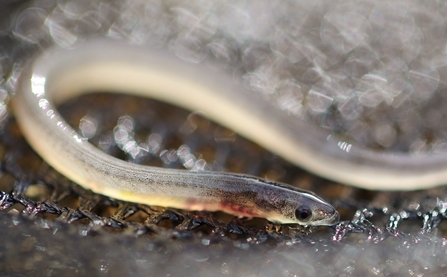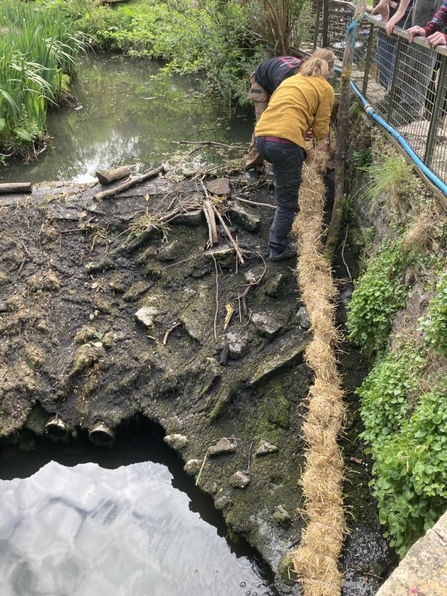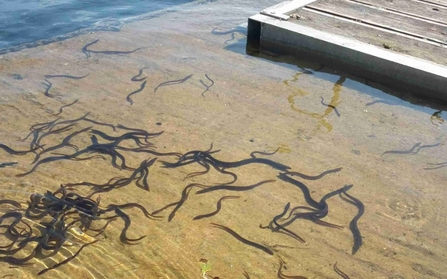When you think of great transformations in wildlife, your mind will probably conjure up images of butterflies emerging from their chrysalis, or a tadpole losing its tale, growing limbs and becoming a frog. What if I told you there’s another creature that can be found in our local rivers which transforms five times over the course of its life? A life which can last for over two decades and span continents! You’d be eel-ated, wouldn’t you?
The European eel. They might not seem like much to look at, but they have a fascinating lifecycle which starts near the island of Bermuda, in the Sargasso Sea. It’s here that they hatch from eggs as transparent, leaf-shaped larvae (also known as leptocephalus) and join the Gulf Stream as it sweeps across the Atlantic Ocean.
They drift for 4,000 miles, over a year or two, before they reach the shores of Europe and North Africa. This is where their first transformation takes place, as they become finger-length, see-through eels known as glass eels, and continue their journey inland.




